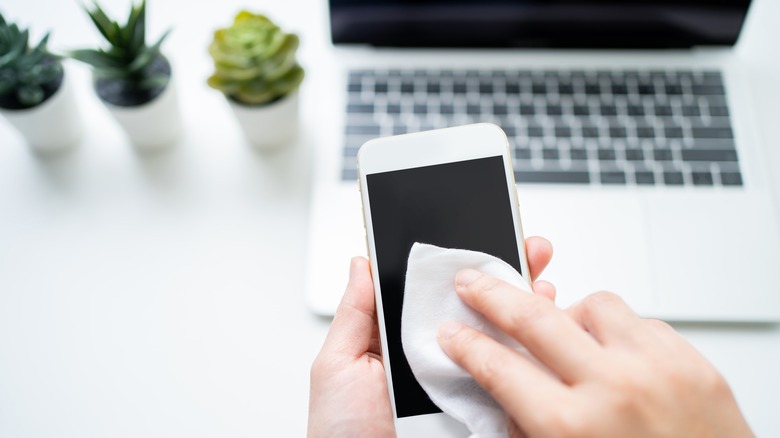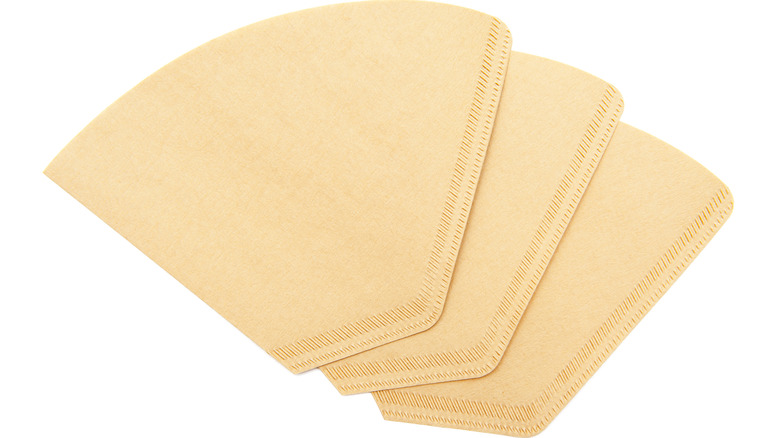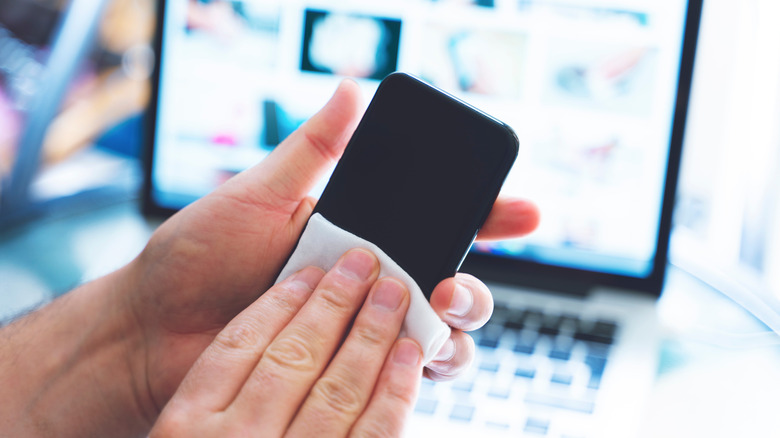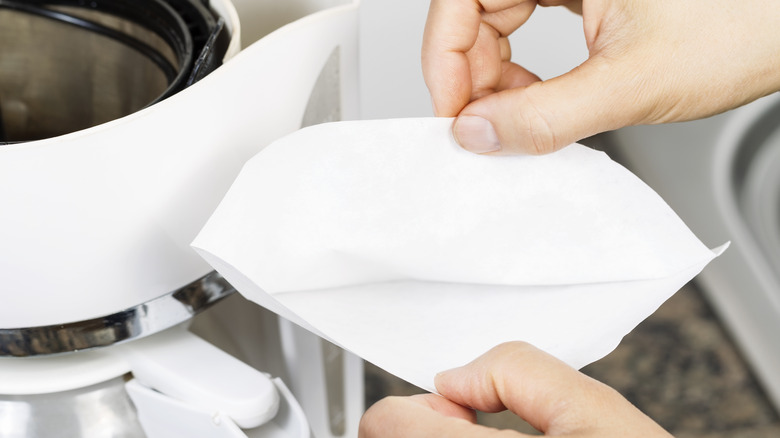Why You Should Be Using Coffee Filters To Dust Off Your Electronics
For coffee lovers, the aroma of fresh-brewed beans, especially on a crisp, sunny morning, is a little piece of heaven. But if you're taking that first sip on a sunny day and the thing that grabs your attention isn't the cup of Joe, but the dust suddenly appearing in the ray of light, you might need to reach for the box of coffee filters again. The inexpensive paper cones work wonders for dusting chores, particularly for anything electronic.
Apartment Therapy highlighted several key characteristics that make a coffee filter a good choice for cleaning electronic items like televisions. The filters won't scratch surfaces because they're soft and lint-fee. When dusting with a coffee filter, the dust will rise with ease while your screen remains pristine.
Television screens aren't the only items in your household that can benefit from a little tender loving care courtesy of coffee filters. Read on to learn more about coffee filters — including how they work, how to use them, and what you can clean with a filter.
How coffee filters work
The coffee filter is an excellent duster for the same reasons it's a good bean barrier. They sport a tight weave of fibers, says the Bean Poet, and they are absorbent, which works well for oils in coffee beans and equally well for oily smudges on electronic items.
Why is that tight weave important? Hilary Bernstein explains that a dusting cloth with a tight weave (just like a coffee filter with a tight weave) helps create an electrostatic charge. "Electrostatic" sounds scientific, but the logic is pretty simple. Think of when you were a child and dragged your feet across a carpet and then touched your electrically-charged finger to your sibling's arm to make them jump. According to Home Questions Answered, that same negative electric charge can attract dust — and while it might not be as much fun as shocking your sister, it can make dusting easier.
How to use coffee filters to clean electronics
Dusting usually isn't very complicated, but when it involves electronics and high-tech gadgets, it's wise to use a little caution. Maids.com recommends reviewing the manufacturer's instructions and disconnecting the device from power sources before getting to work. Once safety measures have been taken, you'll be ready to tackle smudged or dusty electronics. To use the coffee filters as a duster, simply fold and start gently wiping across any television, phone, tablet, or computer screen that needs some attention.
If you want to disinfect while you dust, the Family Handyman goes one step further by noting that the coffee filter can be lightly sprayed with a cleaning solution to attract additional dust and particles and kill germs. Be careful, however, to only spray the filter (not the screen) and to do so with a light hand. A saturated filter could damage the electronic item.
Additional uses
Once you get started using coffee filters to clean your electronics, you might not be able to put the handy duster down. There are plenty of other ways to put your filters to work. One Good Thing notes that they can be topped with a small amount of white vinegar and a drop of essential oil and used as a dryer sheet.
Both One Good Thing and Thompson Sales advise people to grab a coffee filter to keep cars showroom ready, and placing one or more in the glove compartment makes it easy to grab, dust, and go.
Wonder How To lists several innovative uses for the coffee ground catchers. They recommend using filters in the microwave to prevent splatters, putting them at the bottom of a gardening pot to keep soil in while allowing excess water to drain, and even using them as blotting papers for your face.
Coffee Affection likes repurposing coffee filters to dry anything you want to keep spot and lint-free, from china to crystal. The tightly woven paper of a coffee filter leaves those wine glasses sparkling clean and ready to toast your dust-free home.



